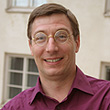Monkey See, Monkey Do
December 19, 2011 Filed under Blog, Featured, Presentations
In writing my book and questioning the “standard” approach that people have used to give scientific presentations, I have often wondered if people stick to convention because that’s all they’ve seen. They see an outline slide or a meaningless “thank you!” slide and think, “Yeah, that’s the way to do it right.”
The question is what would happen if you could design scientific communication from scratch. Would you design a scientific conference the way it exists now? Would talks even exist, let alone PowerPoint presentations?
If you allow people to be creative and not to allow them to be biased by the past, would they have developed the traditional scientific presentation?




Dave,
Good questions, I think it boils down to a few concepts:
1. While we fancy the independent, creative thinker, reality is
humans are amalgams of their exposure. That’s why expectations
and accountability should always be set high.
2. Since public speaking is feared more than death, most deal with
it like we do with any similar siutation — whatever it takes
to get through it. That mentality never engenders excellence,
only survival.
3. Scientific communictaion can be designed from scratch. In fact,
you’ve already done so with Eloquent Science. Every year brings
a new cohort of students who have not been exposed to anything.
If they were all exposed to Eloquent Science, TED talks, Seth Godin,
etc., over time, the entire community would de facto meet the “standards”
espoused. It’s not going to happen today, next year, or in the next
10 years — but if those rising cohorts are taught in a new way and
we hold ourselves and them accountable, it will be different in a
generation.
4. The modern scientific conference is asymptotically approaching a
disaster. 12-minute oral snippets or limited interaction in a noisy
room with 100+ other poster presenters seems grossly insufficient to
discuss and share each other’s last 1-2 year’s worth of work. Simply
look at the number of heads face down in smartphones or tablets, rather
than paying attention, during presentations at the next conference you
attend. It’s BOTH speakers and attendees fault; they are one in the
same.
5. An ideal scientific conference should be a series of mini-short courses
or a true workshop, with deliverable goals from each presenter.
For example, “Dr. David Schultz will lead a discussion on the occlusion
process. At the end of the session, each participant will be able to
identify…, understand remaining unknowns/variances, and apply that
knowledge to operational forecasting.
Imagine having a buffet of sessions to choose from, where you would
gain identifiable skills/understanding by the end of each session. If
the goal is true scientific exchange and progress, isn’t that level
of organization and effort required?
Jon, you raise good points. I am optimistic about the future, too. At the last AMS Annual Meeting in January 2011. I went to to the student poster conference. These were the best-designed posters I had ever seen. Students are starting to learn the qualities of effective communication.
Your last point about the mini-short courses is an excellent idea. Any program chairs of conferences reading this? Jon has tossed out a great idea. Are you willing to experiment with a new format?